A Guide To Buying And Cooking Tomatoes
Tomatoes are one of the most-used and most versatile ingredients in the kitchen, making everything from the humble pizza to the most elaborate and scrumptious sauce.
However, few people really even know what a decent tomato tastes like, so here are some tips on buying a tomato worth buying – and what to do with it once you get it home.
How to Buy Tomatoes
If you’ve only ever eaten store-bought tomatoes, you have no idea what tomatoes really taste like. That’s why many chefs grow their own, freezing or canning any surplus for the winter and spring months. Barring this, the next-best tomatoes can be found at farmer’s markets and produce farms that are open to the public.
When shopping for tomatoes, remember they should feel heavy for their size, have an actual scent (especially at the stem), and should give just a bit when gently squeezed.
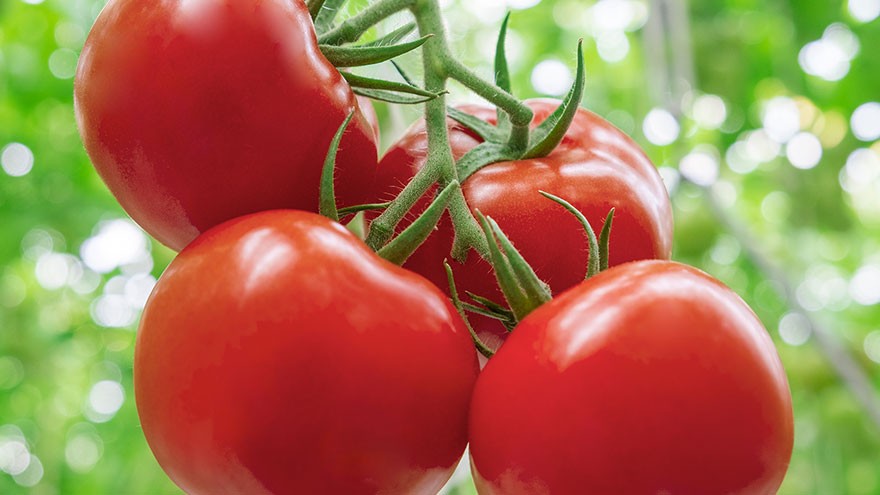
Types of Tomatoes
There are three basic types of tomatoes you could purchase: Slicing tomatoes, plum tomatoes, and cherry or grape tomatoes.
Slicing Tomatoes
Like the popular beefsteak, are large, essentially round tomatoes often sliced for sandwiches, pizzas and other dishes.

Plum Tomatoes
Like Roma, are generally oblong in shape and smaller than slicing tomatoes. They are usually meatier and have fewer seeds, making them ideal for sauces and salsas.
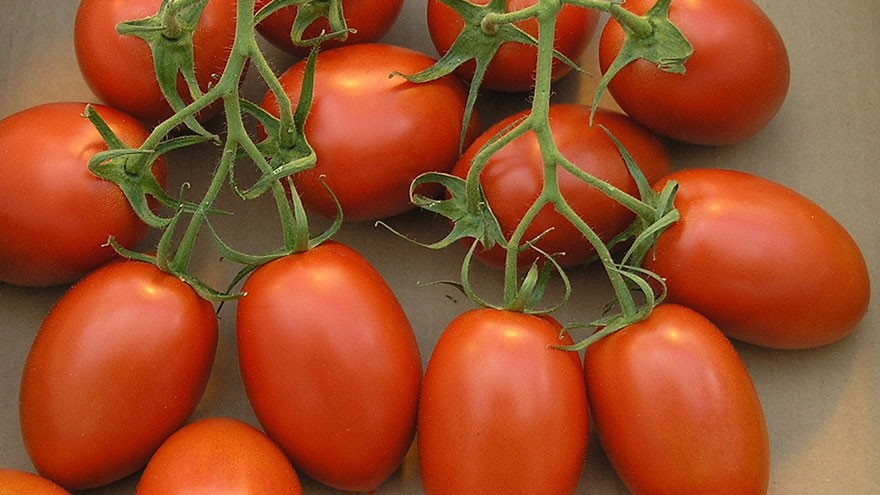
Cherry Tomatoes
Cherry tomatoes are round and generally about 1 inch in diameter, while grape tomatoes are more oblong, but still quite small. Both are often added whole to salads, or – because they have a lower liquid content – chopped into pasta dishes.
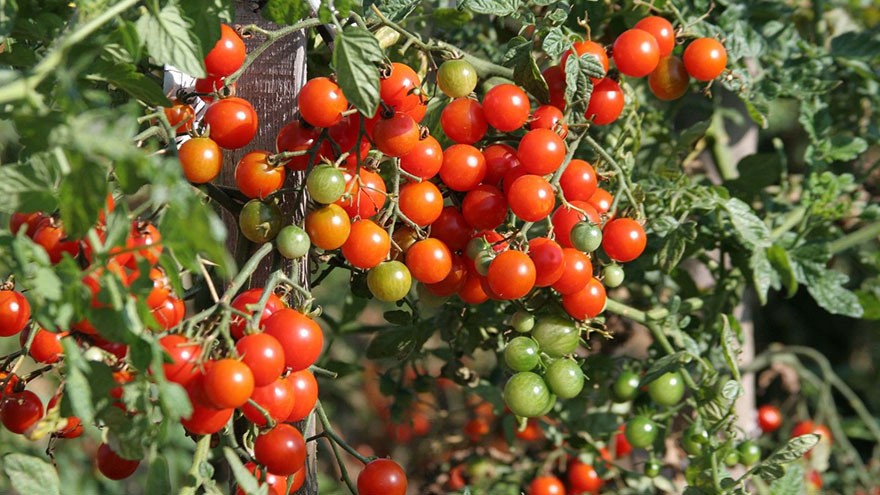
How to Store Tomatoes
Refrigerating tomatoes causes their texture to turn mealy. Therefore, it’s best to store them in a cool, dry, dark location (like the pantry), with their stems facing downward. Keep them in a single layer, since stacking them makes them to go bad more quickly.
If you have more tomatoes than you can use within a week, freeze them. You can freeze tomatoes in nearly any form, including uncooked, cooked, whole, chopped, sliced, and pureed. Frozen tomatoes, however, should be cooked, not eaten raw, since they get mushy after freezing. Also, don’t season tomatoes before freezing them; save that for after they thaw.
To freeze whole tomatoes, remove the stems, wash, and pat dry. Place them in a single layer on a baking sheet and put them in the freezer. Once the fruit is frozen, remove the tomatoes from the baking sheets and place in air tight freezer containers. After the tomatoes are thawed, you can peel them easily simply by running them under warm water and rubbing gently.
Some tomatoes are green even when ripe, but if you have unripe green tomatoes you can either use them as is (fried green tomatoes, anyone?) or ripen them. To do the latter, place them in a brown bag and store in a dark location for a few days.
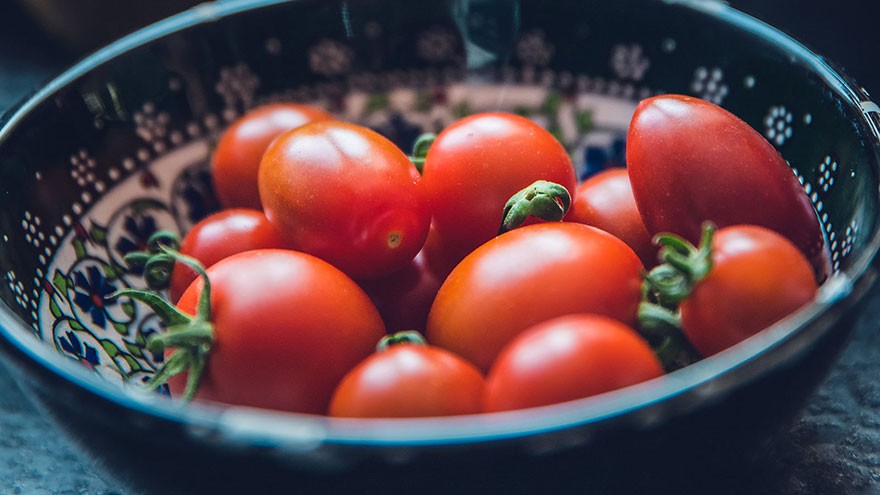
Peeling and Seeding Tomatoes
Many gourmet recipes call for peeling and seeding tomatoes, and any time you need tomatoes to cook quickly, it’s best to peel them. Seeding tomatoes is a matter of texture.
To peel a tomato, cut an X on the bottom of the fruit – only cutting through the skin, not the meat of the tomato. Next, prepare a bowl or sink with lots of ice and cold water.
When peeling just a few tomatoes, place them in an oven-proof bowl in a single layer and cover them completely with boiling water. The skins will bust open after less than a minute; using tongs, remove each tomato as soon as this happens and gently place it in the ice.
For larger batches of tomatoes, fill a large pot with water, bring it to a boil, and place the tomatoes in the water. Remove as soon as the skins pop open, placing them in the ice.
When the tomatoes are cool enough to handle, remove the skins. They will slide off easily.
To remove tomato seeds, halve a tomato, parallel to the stem. Use your finger to remove the seeds and liquid.
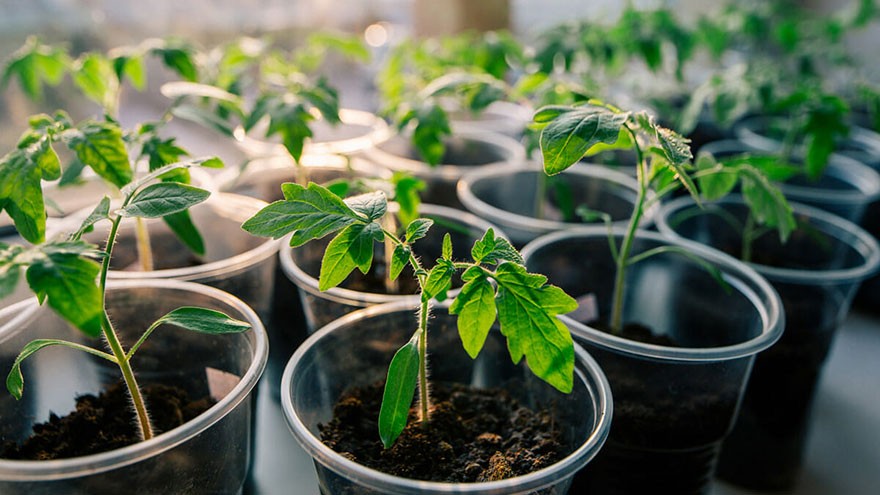
Tips for Cooking with Tomatoes
- Use a serrated knife for cutting.
- Don’t use aluminum cookware or utensils when cooking, or you’ll end up with a metallic flavor.
- To bring out the flavor of tomatoes, season with salt or sprinkle with a little sugar.
- Herbs often used with tomatoes include oregano, basil, pepper, marjoram, dill, garlic, thyme, bay leaf, sesame and celery seed, tarragon, parsley, and chives.
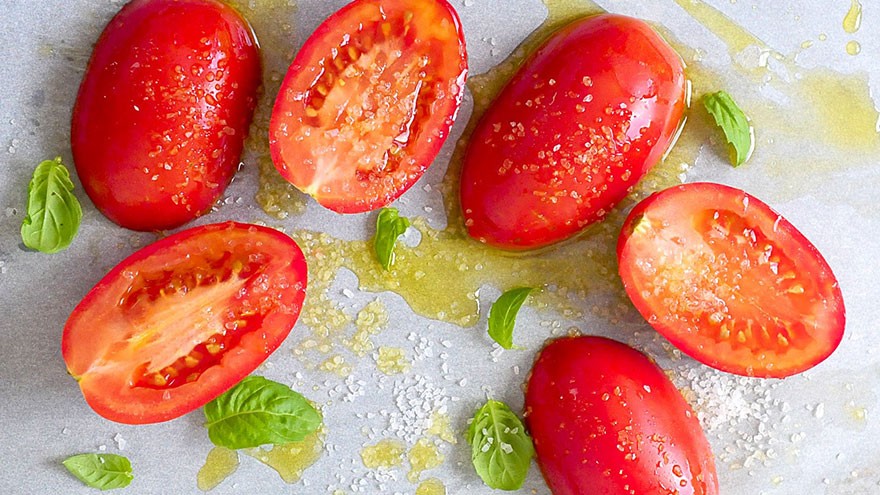
Check out the video version of this article on YouTube

